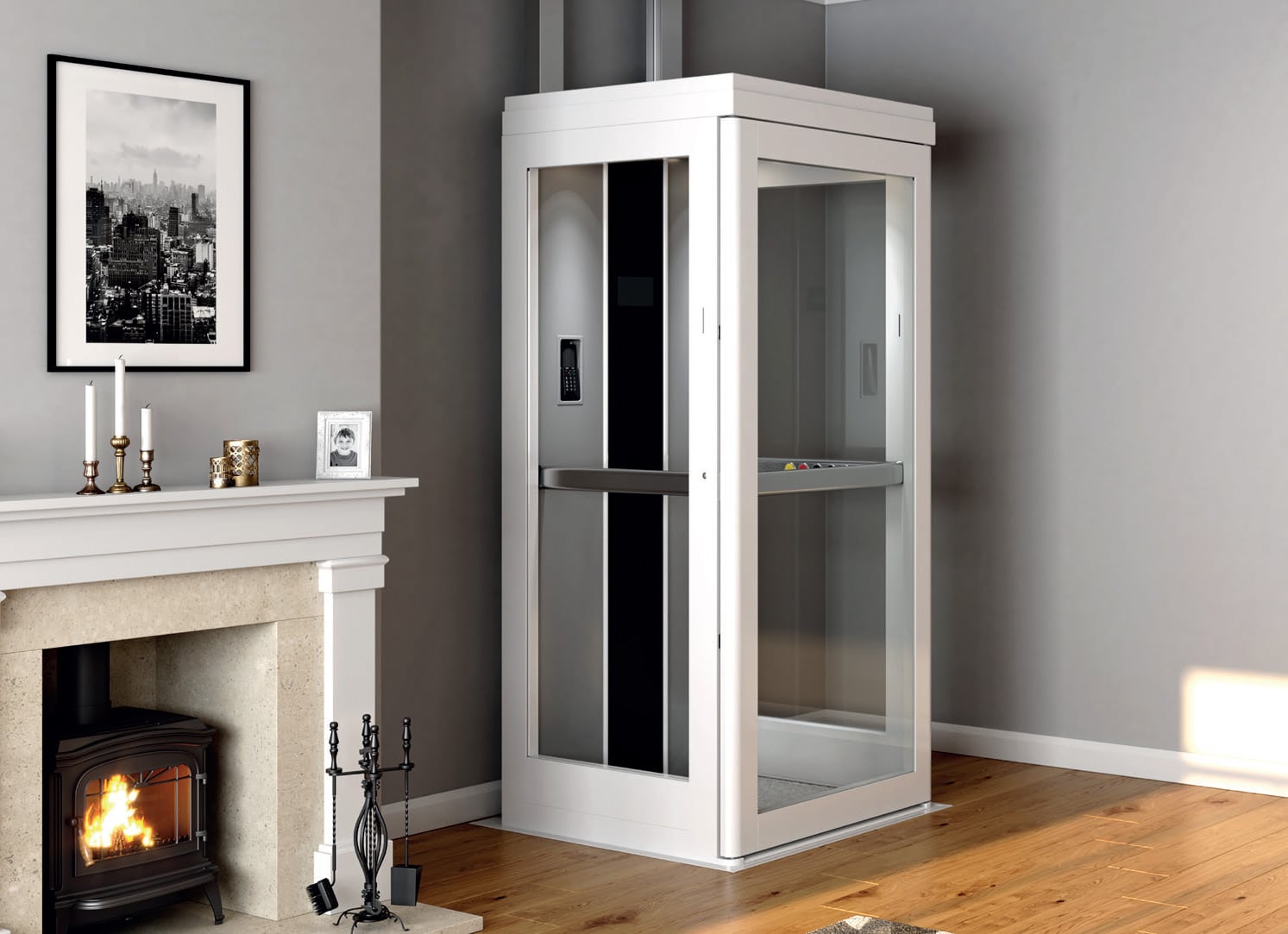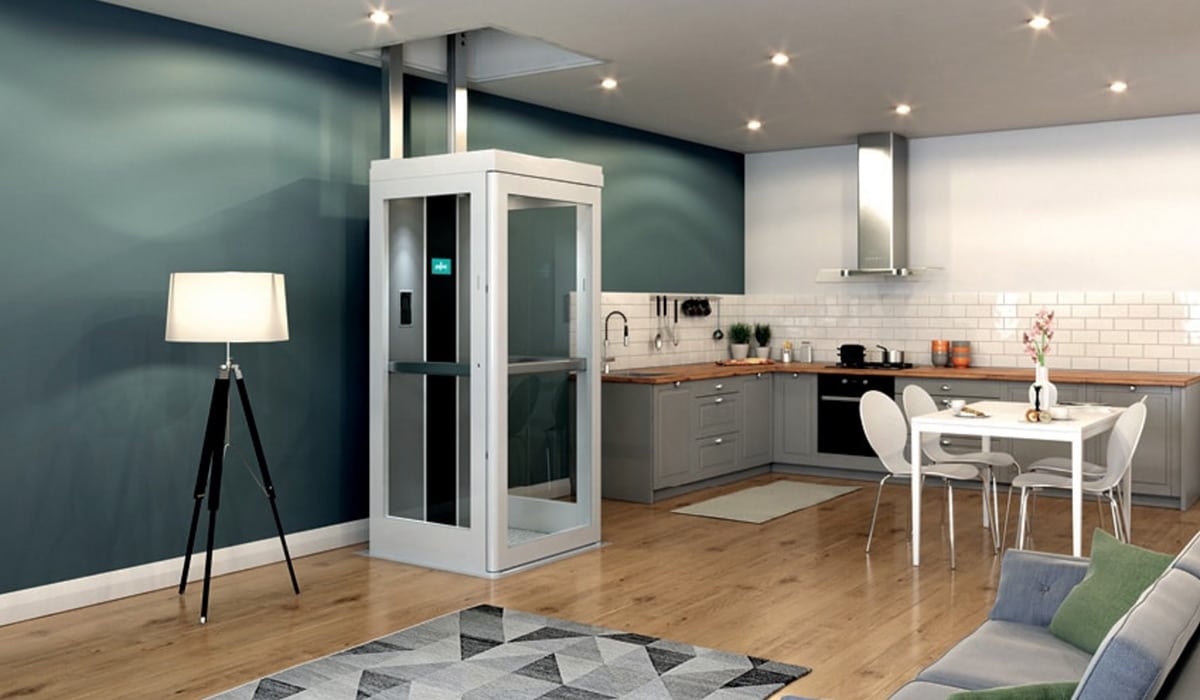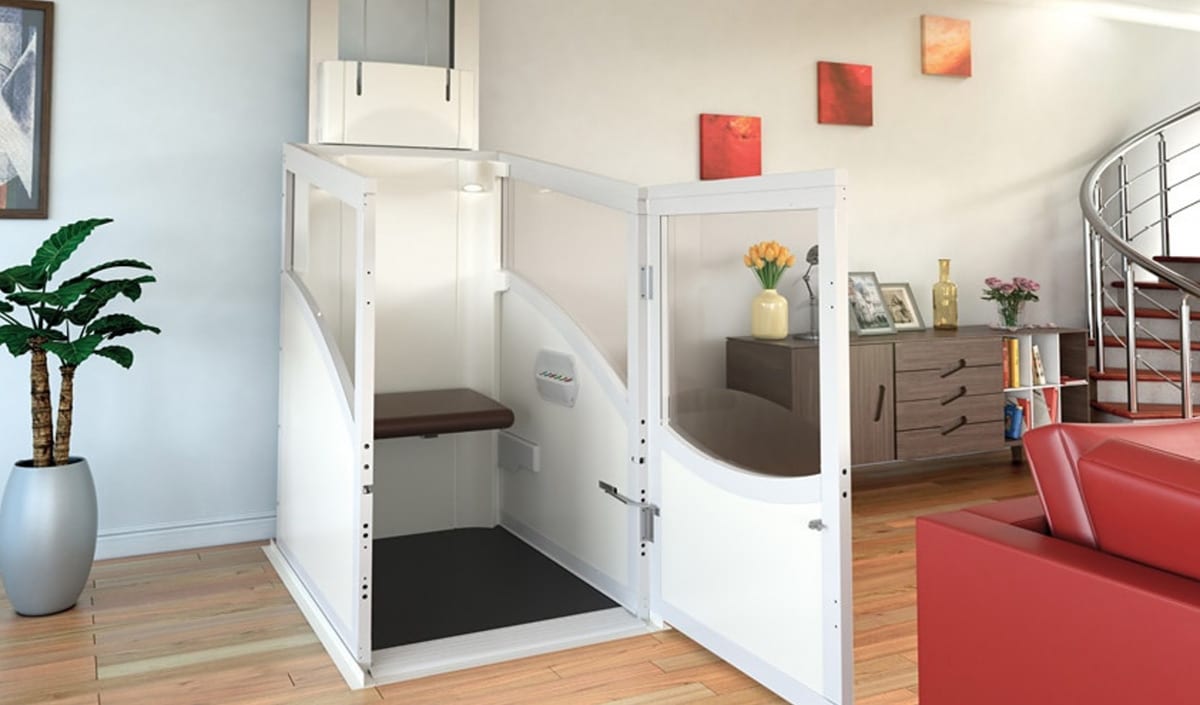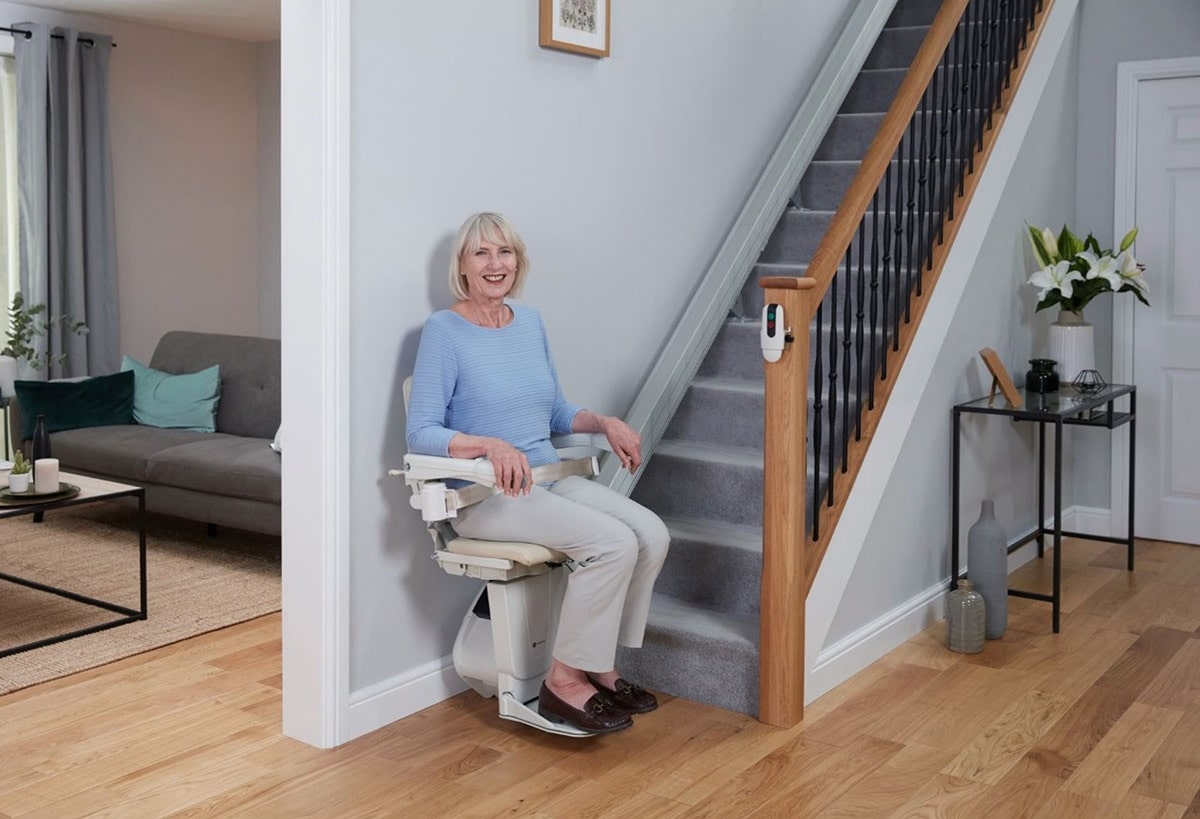Although King Henry VIII is said to have had the world’s first chair lift, at his palace in Whitehall, and even though domestic lifts have indeed, until recently, been the preserve of the rich, things are changing fast.
Until a very few years ago, few self-builders would even have considered installing a lift. But lifestyles are on the move and the costs of lifts have fallen, making both them and stair lifts not only attractive but – more to the point – affordable too.
The fact is that lifestyles are not what they were thirty years ago. Single occupancy is on the rise and inter-generational homes increasingly popular.
Enabling granny to live, or even stay, with you can also impact on how you manage childcare. After all, the main carers for children today (other than their parents) are grandparents.
So, the longer your home enables them to contribute, the better. A lift can also make an otherwise unusable space viable as a granny flat in your new build.

As the costs of moving house, not all of which are financial, rise, it makes sense to stay put if you can, into later years. A lift can make this realistic at a fraction of the cost of moving home.
There are two basic devices that enable people to get to upper floors without using stairs: a stair lift or an ordinary people carrying lift much like those we see in public and commercial buildings.
Older or period homes with narrow stairs may not be able to accommodate a stair lift and such houses may not have space for a passenger lift either.
Stair lifts
A stair lift is a device consisting of a chair attached to a strong metal rail. Stair lifts are mainly used by the elderly; those who tend to suffer falls; and those whose mobility is otherwise impaired.
Henry VIII’s chair-lift was designed to be hoisted up and down with a block and tackle system so his servants could get his 30-stone body, injured through jousting, then bloated by overeating, safely up and down without carrying him.
Today’s stair lifts are somewhat more sophisticated! They have an adjustable seat; an on-board battery; battery isolation switches; safety sensors that ensure they stop if they meet an obstacle; speed governors; seat belts, if needed; can go round corners and along flat areas as well as simply up the main stairs; and so on.
You will get what you pay for. Some are pretty basic and others can be tailor made to suit very particular needs. But whatever the specification, the user sits side saddle (at right angles to the direction of travel), sometimes on a swivel seat that makes getting on and off easier.
Straight rail lifts cost less than the more complex curved rail ones, for obvious reasons. Although the vast majority are for indoor use it’s also possible to have one made in materials suitable for outdoor installation.
Almost all such lifts are powered by an on-board battery that recharges at the top or the bottom of its travel when not in use. Most are fitted to the stairs themselves, rather than to the walls, so any damage done to your structure is minimal.
Although it’s possible to install some such lifts as a self-builder, this is probably better left to the professionals. It is, after all, a serious piece of equipment that carries a very valuable cargo, so should be securely installed and all the safety elements taken care of right from the start.
Home lifts
There are four main types of domestic lift. They vary a lot in price, according to how much building work is required. Be very careful when discussing your proposed lift with suppliers as it can be hard to ensure you’re comparing like with like.
Always go with a company that will come and do a survey and then give you a price that reflects your actual installation. Be sure the price includes delivery, as this can be high.
Such a visit will also enable you to get the right type of lift for your needs. With a new build, the company will work off your drawings to suggest the best solution.

Hydraulic lifts: Basic through-the-floor lifts can vary in price between twenty and thirty thousand but can be a lot more. This system works by pumping hydraulic fluid which raises and lowers the cage via a piston. It needs quite a lot of space plus a machine room and requires maintenance. Such lifts are best if you intend to carry heavy weights (or several people) between floors.
Traction lifts: are usually more expensive than hydraulic ones (could easily be in excess of thirty thousand), tend not to be as smooth a ride, and because they depend on cables and counterweights also have high maintenance costs. The cables themselves can need replacing every five years.
Vacuum lifts: are simple structures made up of a self-supporting, sealed tube with the difference in air pressure above and below the cab transporting the passenger by air. A vacuum ‘sucks’ the cab up and the slow release of the air pressure allows it to float back down again. Such lifts are usually for only one or two people.
Non-hydraulic lifts: are the simplest and least expensive type, costing as little as fifteen thousand.
Most people opt for a non-hydraulic type as it’s the simplest possible system with no pits, machine rooms, load bearing walls, or other engineering works. This means that today’s domestic lift is usually: self-supporting; installed in a day or two; relatively inexpensive (can be less than twenty thousand); elegant and unobtrusive in design; and adds value to your home. Such a lift requires virtually no servicing, in contrast with normal passenger lifts. Many simple non-hydraulic lifts work off a standard 13A wall socket. They can be called remotely from any floor and have battery back-up in case of a power cut.

Most such simple lifts can service only one floor above the ground floor but by paying more it’s possible to have a similar system that’ll service three, or even more, floors.
Although their speed is slow, compared with that of commercial lifts, most home versions will get you to the first floor in under 30 seconds.
When first thinking about your lift, give careful consideration to where it will be sited. Some can fit within the inside curve of a winding staircase, for example. You’ll be surprised how tiny the footprint is.
How many people will you need it to carry? How about getting one large enough to accommodate a future wheelchair? If you go this route, the location of the lift’s entrance will need planning so it’s easy and practical to get a wheelchair and carer in and out of the cab. This will mean modelling local traffic flows and door openings.
But getting all this right could revolutionise your later years in the house. Don’t forget this practical flow stuff will need thinking about for each floor your lift services, not just the ground floor. There are also lifts that take only a wheelchair. They’re great if the user can safely drive themselves in and out and work the controls alone.
Sliding doors are easier to operate than concertina style ones. After this, and as with so many home improvement products, it’ll be up to you how complex you want your lift to be.
There are numerous accessories available for most lifts but the costs soon add up if you’re not careful. Glass or other see-though materials such as polycarbonate can make the shaft almost invisible. Carefully sited and with planning for its appearance, your lift could be near invisible even in a minimalist design home.
As with stair lifts, a normal lift can be weatherised so it can go up the outside of your home. This will almost definitely call for special planning permission and will cost a great deal more. Normal, inexpensive, domestic lifts are not meant to be used outside.
All images courtesy of Pollock Lifts, pollockhomelifts.co.uk











